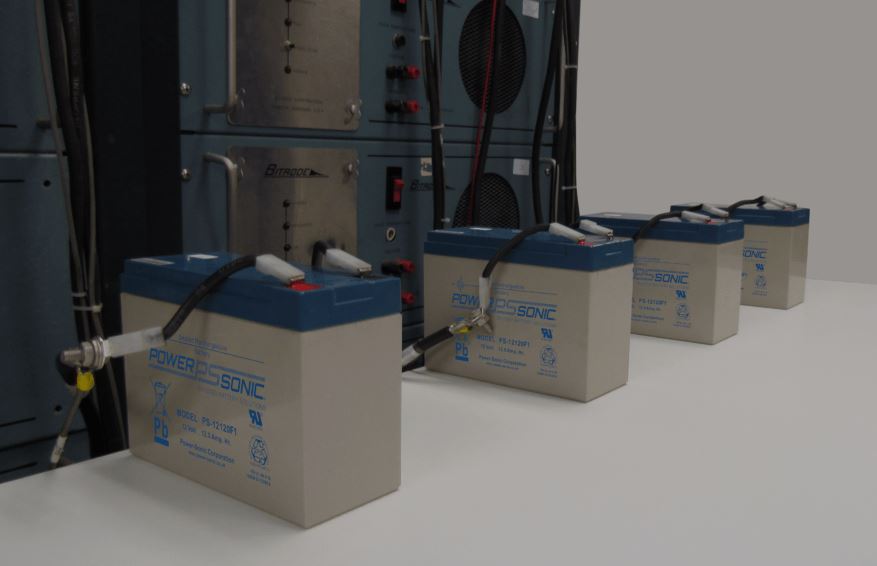
The service batteries are one of the most important components of the electrical system, to which we entrust a large part of our comfort board.
Yet they are objects that are poorly understood by the vast majority of people, so much so that, at the time of purchase, they are often disoriented among the thousands of proposals on the market and are unable to make a suitable choice for their needs.
But before going into the technical details, let me introduce some basic concepts, even if they will be obvious to many of you:
What is a battery
Also called an electric charge accumulator, a battery is a storage tank for electrical energy. Yes, just a tank like that of water or diesel. Only that the battery stores electricity instead of water or diesel.
The water tank can have different capacities (number of liters), just as the battery can have different capacities (number of Ampere-hours–abbreviated to Ah).
The tank is filled with water from the barrel or the desalinator, and the battery is filled by supplying energy with current generators (alternator, solar panels, shore charger, etc.)
The water tank is discharged by opening the shower faucet, and the battery is discharged by turning on the light or operating the refrigerator.
As you can see, there are many similarities, and with these simple examples, we have already introduced an important quantity: The capacity of a battery.
This is therefore measured in Ah (Ampere x hour, but NOT Ampere/hour), and it is understood that the greater the capacity, the greater the energy autonomy.
To increase the capacity, we can install more batteries by connecting them in parallel. In this way, the total capacity of the battery bank will be equal to the sum of the capacities of the individual batteries that make up the bank. For this purpose, it would be advisable always to use the same batteries, of identical capacity, of the same brand, and purchased simultaneously. Otherwise, they could be damaged.
The construction technologies of lead-acid batteries
Normal lead-acid batteries are found on the market mainly in three different construction categories:
- Flooded batteries (or liquid electrolyte)
- AGM (Absorbed Glass Matt) batteries
- Gel batteries
The difference between these three types is only in the type of electrolyte in which the lead plates are immersed.
The former (liquid electrolyte batteries) is a simple liquid solution of distilled water and sulfuric acid. The disadvantage of these batteries is that they must not be tilted too much, as acid leakage could occur with all the consequent problems. Even the so-called “sealed batteries,” in fact, are never completely watertight. The same problem, even of a greater entity, is in the case of shocks with consequent breakage of the casing.
In AGM batteries, the lead plates are “drowned” in a fiberglass sponge soaked in the electrolyte, which is always a sulfuric acid solution. In this way, since there is no free liquid, the battery is much safer, especially for extreme use such as marine use, where vibrations, accelerations under the blows of the sea, and above all, high heeling angles are the order of the day. AGM battery is free from risks deriving from the leakage of liquid acid and can also be used upside down. It is also a truly maintenance-free battery. Another advantage usually inherent in AGM batteries is that these, having a low internal resistance, can be charged faster (with higher currents) than other types of batteries.
Gel batteries also have many advantages of AGM, in that the electrolyte is made of a gel instead of glass fiber. Still, the substance does not change, and the safety against possible acid leaks is, in any case, guaranteed. What differentiates AGM batteries from gel ones is the starting current, which in the former is decidedly greater and comparable to liquid electrolyte ones. For this reason, AGM RV battery can be used as an engine starter battery. In contrast, a gel battery would be less suitable as it may not be able to provide the necessary power for starting the starter motor.
Another peculiar feature of gel batteries is that they are more delicate in the recharging phase. Therefore it is necessary to have chargers that specifically support this type of battery. If the voltage supplied by the battery maintainer were too high, there would be a risk of the formation of hydrogen bubbles inside the gel, with consequent damage to the battery.
Deep Discharge Batteries (Deep Cycle)
The similarities and differences between the three main types end there.
You may have noticed that we have not even mentioned the type of use (service or starting) of these batteries. Yes, I said a gel battery is unsuitable for starting the engine, but what about services? Which is better to use?
Many people think that the type of use of a battery (starter or service) is closely linked to construction technology (liquid, AGM, or gel), but in truth, it is not at all!
Other characteristics make a battery more suitable for one or the other users and usually have little to do with whether it is AGM battery, Gel battery , or other.
We find AGM batteries on the market suitable for starting (with which many modern cars are equipped), just as there are excellent batteries suitable for services with liquid electrolyte technology.
In general, a RV battery is designed to have very high starting currents, but on the other hand, it is never able to withstand so-called deep discharges. In other words, a battery of this type is usually never discharged more than 10% of its nominal capacity, and in this way, its life will be around 4-5 years.
On the other hand, the batteries used for services must have very different characteristics. They don’t have to have very high inrush currents, but instead, they must withstand many deep discharge cycles without causing damage.
One thing common to all lead acid batteries is this:
The number of charge/discharge cycles obtained before the battery “dies” is inversely proportional to the depth of discharge. In other words, if we take any battery, it can be discharged by 10% a certain number of times before throwing it away. But if instead of 10%, we discharged it by 50%, the same battery would last much less.
There is usually a graph (or table) that shows the number of battery life cycles as a function of the DOD (Depth Of Discharge) or the depth of discharge of the cycles themselves, such as the one shown below:
When choosing a battery for services, therefore, the only thing to do (and which must always be done) is to check how many cycles it can withstand at high discharge depths (DOD > 50%). This way, you will know how many years it will last you.
A starter battery, if deeply discharged, can last even less than a year, whereas a good battery designed for deep discharges can last 10 years without problems, subjecting it to the same use.
Of course, a good battery for deep discharges can cost double or even three times as much as a starter battery, but in some cases, the higher cost pays for itself over time.
So when you buy a new battery, look at the technical data. The same manufacturer almost always has different lines of batteries in its price list, with very different prices and characteristics, even if they are all made with the same construction technology.






